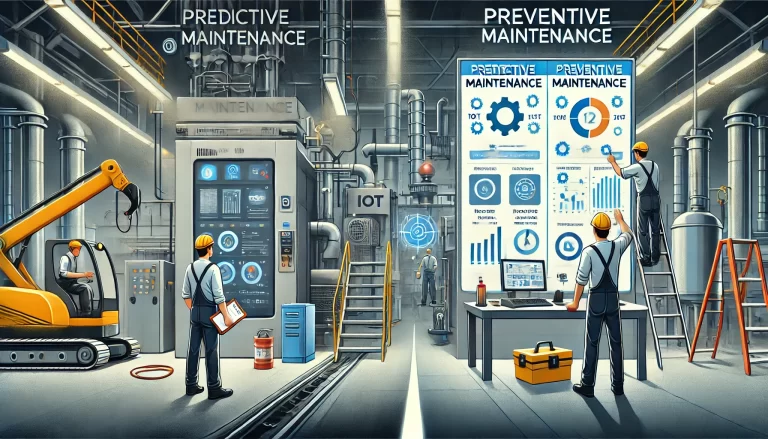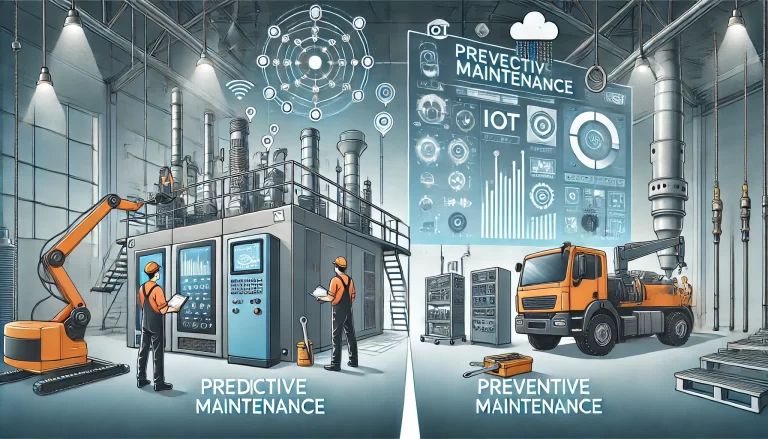Maintenance strategies are critical to ensuring the efficiency, reliability, and longevity of industrial equipment and systems. Two widely adopted approaches—predictive maintenance and preventive maintenance—offer distinct methodologies and advantages. This article explores their definitions, strengths, weaknesses, and applicable scenarios, providing a comprehensive understanding of each approach.
1. Understanding Predictive Maintenance
Predictive maintenance is a strategy that relies on monitoring equipment condition and operational data to anticipate future performance. Using technologies like advanced sensors, data analytics, and artificial intelligence (AI), predictive maintenance enables the detection of potential faults or anomalies during equipment operation. By analyzing this data, it predicts failure trends, allowing maintenance teams to plan and execute repairs proactively before issues escalate.
Key Features:
- Real-time monitoring using cutting-edge technologies.
- Focuses on minimizing unexpected failures.
- Enhances decision-making by providing actionable insights.
Example Applications:
- Manufacturing: Monitoring vibration levels in motors to detect early signs of bearing wear.
- Aviation: Analyzing engine parameters to predict potential turbine issues, avoiding in-flight failures.
- Oil and Gas: Using IoT sensors to track pipeline pressures and prevent leaks.

2. Understanding Preventive Maintenance
Preventive maintenance, in contrast, is a time-based or usage-based strategy. It involves scheduling regular inspections, servicing, or replacements based on equipment’s average lifespan or predefined intervals. While this approach reduces the likelihood of unexpected breakdowns, it lacks the real-time adaptability of predictive maintenance and might result in unnecessary interventions.
Key Features:
- Scheduled based on predefined time or usage criteria.
- Best suited for equipment with stable failure patterns.
- Relatively simpler to implement compared to predictive maintenance.
Example Applications:
- Automotive: Regular oil changes or tire rotations every 5,000 miles.
- Facilities Management: HVAC systems undergoing periodic filter replacements.
- Healthcare Equipment: Scheduled calibration and servicing of diagnostic machines.
3. Pros and Cons of Predictive and Preventive Maintenance
Predictive Maintenance
Advantages:
- Minimized Downtime: Maintenance is performed only when necessary, reducing unnecessary equipment stoppages.
- Cost-Efficiency: By targeting specific needs, it prevents over-maintenance and reduces overall costs.
- Improved Asset Utilization: Real-time insights ensure maximum operational efficiency and reliability.
Disadvantages:
- High Initial Investment: Implementing predictive maintenance requires significant resources for advanced sensors, software, and technical expertise.
- Complex Integration: Older equipment may not support modern monitoring systems, limiting the strategy’s applicability.
Preventive Maintenance
Advantages:
- Simplicity and Predictability: Straightforward scheduling ensures maintenance tasks are easy to plan and execute.
- Extended Equipment Lifespan: Regular care reduces wear and tear, increasing durability.
- Lower Initial Costs: No need for advanced monitoring systems or sophisticated technologies.
Disadvantages:
- Potential Over-Maintenance: Scheduled checks might lead to unnecessary servicing, wasting resources.
- Higher Downtime: Maintenance activities might require shutting down equipment even when not urgently needed.

4. Comparing Applicability and Use Cases
| Aspect | Predictive Maintenance | Preventive Maintenance |
|---|---|---|
| Best for | Complex, high-value equipment with unpredictable failures. | Standard machinery with predictable failure patterns. |
| Cost Efficiency | Reduces long-term costs but has high setup expenses. | Lower setup costs but can result in over-maintenance. |
| Implementation | Requires advanced technologies and skilled personnel. | Easier to implement with basic scheduling tools. |
Combining Both Approaches:
Many industries benefit from integrating predictive and preventive maintenance. For instance:
- A factory might schedule preventive lubrication for conveyor belts while using predictive analytics to monitor motor performance.
5. Final Thoughts
Choosing between predictive and preventive maintenance depends on several factors, including equipment complexity, failure patterns, operational goals, and available resources. Predictive maintenance excels in dynamic, data-rich environments, enabling precise and efficient interventions. Preventive maintenance, on the other hand, offers simplicity and reliability, making it suitable for routine care in stable systems.
By understanding the strengths and weaknesses of both approaches, organizations can tailor their maintenance strategies to maximize efficiency, minimize costs, and enhance operational reliability.
